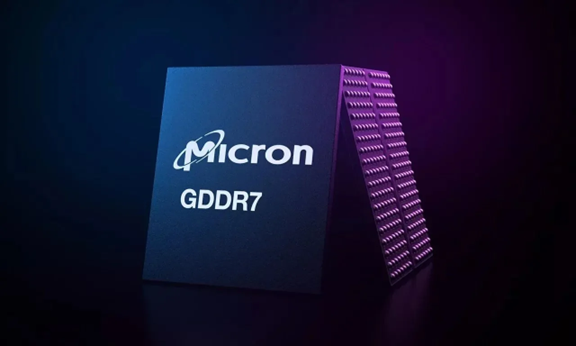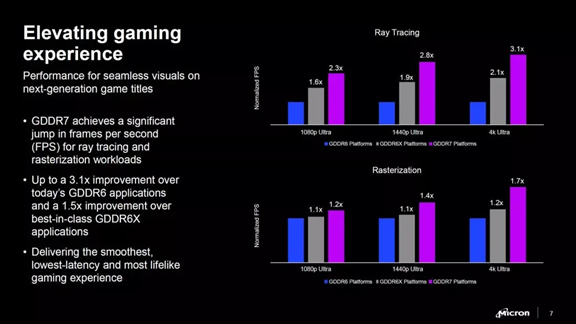Micron joined the GDDR7 launch later than Samsung and SK Hynix. Samsung announced its GDDR7 memory in October 2022, showcased it in February 2024, and began shipping in March. To stand out, Micron showcased its GDDR7 in a ray-tracing application. That move tied the new memory directly to performance improvements in popular applications. Micron had previously developed a super version of GDDR6 for Nvidia and is likely to do the same with GDDR7 soon.

Micron is a little late to the GDDR7 launch party. Samsung announced it would build next-gen GDDR7 memory chips in October 2022 and said it would show them in February 2024 and ship them in March. SK Hynix and Samsung showed working GDDR7 parts at Nvidia’s GDC in March.
But Micron did something extra to gain the attention of their rollout—they used the new generation of graphics memory chips in a real application. Ray tracing was a good choice for Micron for two reasons. First off, ray tracing will use every picosecond of memory access and every bit of capacity you can give it. GDDR7 is a welcomed partner for that. Secondly, Nvidia, Intel, and AMD are making a big deal about ray tracing with their DLSS, XeSS, and FSR, respectively.

A new memory chip announcement is, well, pretty unexciting. But when you tie it directly to a performance improvement in a popular app, then you get people’s attention. That, in turn, leads the technoides to want to see what’s new and presumably better, and Micron offered that too in a nice table.
| GDDR6 | GDDR7 | |
| DRAM die density | 16Gb | 16Gb |
| Max data rate (per pin) | 18 Gb/s | 32 Gb/s |
| BW/component | 72 GB/s | 128 GB/s |
| Signaling | NRZ | PAM3 |
| Device width (I/O) | 32 bits | 32 bits |
| # Channels/package | 2 | 4 |
| Access/channel | 32-byte | 32-byte |
| Access/device | 512b | 1,024b |
| Voltage (max) | 1.35V | 1.2V |
| Power efficiency (pJ/bit) | 6.5 pJ/bit | 4.5 pJ/bit |
| Package dimensions | 12 × 14 × 1.2 mm | 12 × 14 × 1.1 mm |
| Ball pitch | 0.75mm | 0.75mm/O.73mm |
| Clam shell | Yes | Yes |
| Ball count | 180 | 266 |
| RAS features | ||
| On-die ECC | No | Yes |
| ECC transparency | No | Yes |
| CA parity | No | Yes |
| Error check and scrub | No | Yes |
| Host post package repair (hPPR) | No | Yes |
| Poison data handling ^p | No | Yes |
Micron’s GDDR7 comparison table.
But, if you want to see something really boring, look at the chip photo.
Actually, the photo is kind of interesting, look at the ball array—zillions of bits a second come pouring in and out of those connections. As they do, they heat things up; so, if you look at line 11, power efficiency (pJ/bit) in the table above, you can get a sense of the heating and the improved efficiency of the GDDR7 chip.
Micron developed a super version of GDDR6 for Nvidia, and we wouldn’t be surprised to see them do the same thing with GDDR7 later this year.